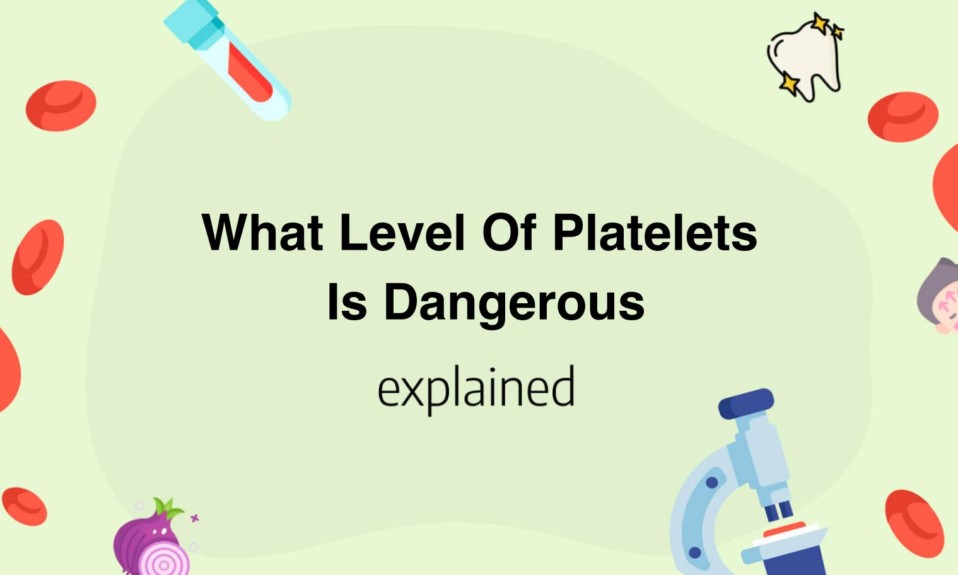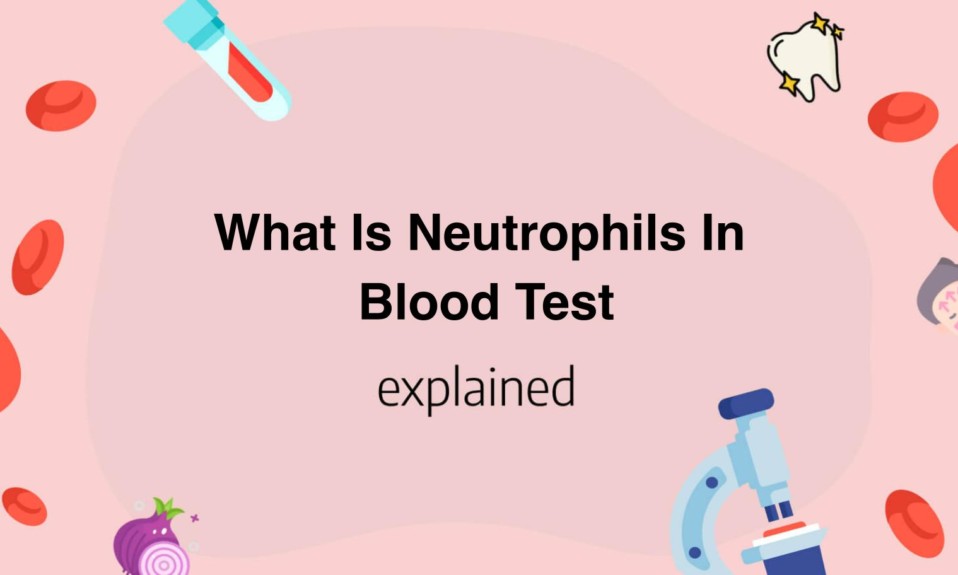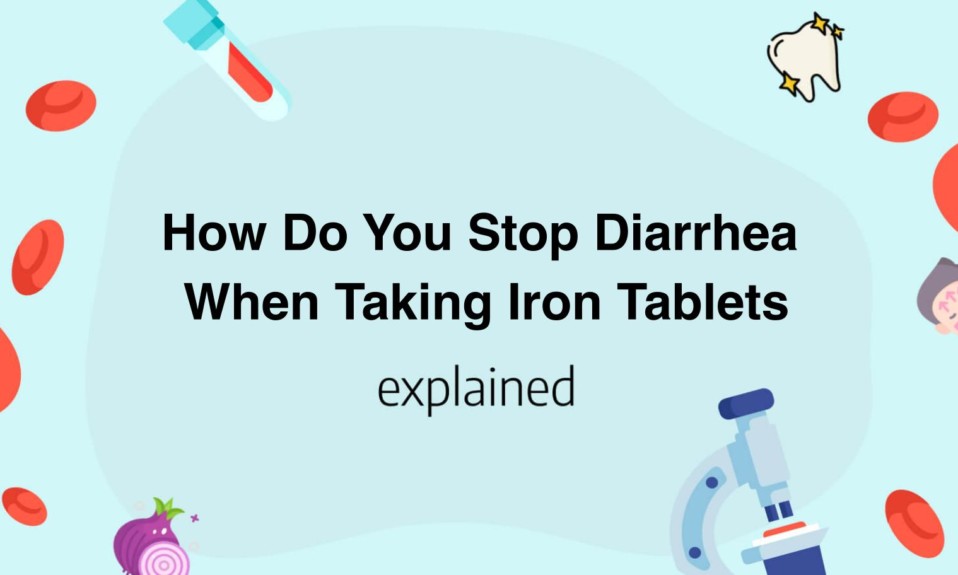Platelets play a crucial role in the blood clotting process, which is essential for preventing excessive bleeding.
However, abnormal levels of platelets can indicate an underlying health condition.
Understanding what level of platelets is dangerous is vital for both medical professionals and individuals.
Low platelet count (thrombocytopenia) can lead to serious bleeding complications, while high platelet count (thrombocytosis) may increase the risk of blood clots.
In this article, we will delve into the potential dangers associated with abnormal platelet levels and explore the possible causes and symptoms to watch out for.
- A decrease in platelet count below 150,000 platelets per microliter of blood is considered thrombocytopenia, which can be dangerous.
- However, the severity of the danger depends on the specific cause and individual health condition.
- Platelet levels below 50,000 platelets per microliter may cause increased bleeding after minor injuries or spontaneously.
- Danger escalates further when platelet levels fall below 20,000 platelets per microliter, which may lead to bleeding even without an apparent injury.
- In severe cases, where platelet count drops below 10,000 platelets per microliter, life-threatening bleeding can occur, requiring immediate medical attention.
What are platelets and their role in the body’s health?
Platelets are small, disc-shaped cells that play a crucial role in maintaining the body’s overall health.
These tiny cells, also known as thrombocytes, are produced in the bone marrow and circulate in the bloodstream.
They are essential for blood clotting and play a pivotal role in preventing excessive bleeding.
Platelets serve multiple functions in the body, including:
- Formation of blood clots: When a blood vessel is damaged, platelets rush to the site and form a clot to prevent excessive bleeding.They stick together and form a plug, sealing the injured area until the blood vessel can heal.
- Release of growth factors: Platelets contain growth factors that stimulate the repair and regeneration of damaged tissues.These growth factors attract stem cells to the site of injury and promote the formation of new blood vessels, accelerating the healing process.
- Immune response: Platelets also play a role in the body’s immune response.They release proteins that help recruit immune cells to fight off pathogens and remove foreign substances from the bloodstream.
- Anti-inflammatory properties: Platelets release anti-inflammatory molecules that help reduce inflammation and support the healing process.These molecules help limit tissue damage and prevent chronic inflammation, which can be detrimental to overall health.
- Tissue repair and regeneration: Platelets release proteins and growth factors that promote tissue repair and regeneration.They help stimulate the production of collagen, a crucial protein that provides structural support to blood vessels, skin, and other tissues.
In summary, platelets play a vital role in maintaining the body’s health by promoting blood clotting, supporting the immune response, reducing inflammation, and facilitating tissue repair.
Their ability to form blood clots and release growth factors ensures proper healing and prevents excessive bleeding.
By understanding the importance of platelets, we can appreciate the intricate mechanisms that contribute to our overall well-being.
So, next time you see a small cut or bruise healing, remember the unsung heroes working behind the scenes – platelets!
Understanding the normal range of platelet counts
Platelets are small, colorless blood cells that play a crucial role in the process of blood clotting.
They help stop bleeding by clumping together and forming a plug at the site of an injury.
Monitoring platelet counts is essential to assess an individual’s overall health, as abnormal values can indicate various underlying conditions.
The normal range of platelet counts is typically between 150,000 and 450,000 platelets per microliter of blood.
It is important to note that the normal range may slightly vary among different laboratories and healthcare facilities.
However, the range mentioned above is widely accepted as the standard.
A platelet count below 150,000 may indicate a condition known as thrombocytopenia, characterized by a decreased ability of the blood to clot properly.
On the other hand, a count above 450,000 may suggest thrombocytosis, which is an increased risk of abnormal clot formation.
There are several factors that can influence platelet counts.
Age and gender can play a role, as platelet counts tend to be slightly higher in children and males compared to adult females.
Additionally, certain medical conditions and medications can affect platelet production and functionality.
For example, individuals with bone marrow disorders or undergoing chemotherapy may experience low platelet counts.
Conversely, inflammatory disorders such as rheumatoid arthritis can lead to elevated platelet counts.
To further illustrate the importance of understanding platelet counts, let’s consider a hypothetical scenario.
Sarah, a 40-year-old woman, visits her doctor for a routine check-up.
As part of the bloodwork, her platelet count is measured and found to be 120,000
This value falls below the normal range, indicating thrombocytopenia.
Sarah’s doctor would then investigate potential causes, such as medication side effects, liver disease, or an immune disorder that affects platelet production.
In conclusion, having a clear understanding of the normal range of platelet counts is crucial for healthcare professionals and individuals alike.
By monitoring platelet counts, abnormalities can be identified early, allowing for prompt diagnosis and treatment.
Remember to consult a healthcare provider if you have concerns about your platelet count or any other aspect of your health.

What Level Of Platelets Is Dangerous
Platelets are an essential component of our blood that helps in the process of clotting.
However, having either too high or too low levels of platelets can indicate underlying health problems.
It is important to understand the level at which platelets become dangerous.
Normal platelet count
A normal platelet count ranges from 150,000 to 450,000 platelets per microliter of blood.
If your platelet count falls within this range, it is considered healthy and indicates a normal functioning clotting system.
However, it is important to note that the reference range may vary slightly depending on the laboratory that performs the test.
Dangerous low platelet count (thrombocytopenia)
When the platelet count falls below 150,000 platelets per microliter of blood, it is medically known as thrombocytopenia.
This condition can be dangerous as it impairs the body’s ability to form clots, leading to excessive bleeding or bruising. Some common causes of thrombocytopenia include certain medications, viral infections, autoimmune disorders, and bone marrow disorders.
If left untreated, severe thrombocytopenia can result in life-threatening hemorrhage.
Dangerous high platelet count (thrombocytosis)
On the other end of the spectrum, a high platelet count, known as thrombocytosis, can also be problematic.
Thrombocytosis is defined as a platelet count exceeding 450,000 platelets per microliter of blood.
This condition can increase the risk of blood clot formation, which can lead to complications such as deep vein thrombosis or stroke. Thrombocytosis can be caused by various factors, including certain medications, iron deficiency anemia, chronic inflammation, or underlying bone marrow disorders.
It is essential to monitor and manage thrombocytosis to prevent potential clotting complications.
In conclusion, both low and high platelet counts can be dangerous.
Thrombocytopenia increases the risk of excessive bleeding, while thrombocytosis increases the risk of blood clot formation.
Regular blood tests can help detect abnormal platelet levels and prompt appropriate medical intervention.
If you experience symptoms such as unexplained bruising, prolonged bleeding, or signs of a blood clot, it is crucial to seek medical attention promptly.
Remember, maintaining a healthy platelet count is essential for a well-functioning clotting system and overall well-being.
Factors that can cause low platelet levels
Platelets are an integral component of our blood that play a crucial role in the clotting process.
However, there are various factors that can lead to low platelet levels, medically known as thrombocytopenia.
These factors can range from underlying health conditions to certain medications or lifestyle choices.
Understanding these factors is essential for diagnosis and treatment.
One common cause of low platelet levels is bone marrow disorders.
These disorders can prevent the bone marrow from producing enough platelets, leading to thrombocytopenia.
Examples of bone marrow disorders include aplastic anemia, myelodysplastic syndromes, and leukemia.
Another cause is viral infections such as dengue fever or hepatitis C, which can affect platelet production or cause destruction of existing platelets.
Certain medications can also have an impact on platelet counts.
For example, chemotherapy drugs used in cancer treatment can suppress bone marrow function, resulting in decreased platelet production.
Nonsteroidal anti-inflammatory drugs (NSAIDs) like ibuprofen and aspirin can interfere with platelet function and contribute to low platelet levels.
It’s important to note that these medications should only be discontinued or adjusted under the guidance of a healthcare professional.
In some cases, low platelet levels can be caused by autoimmune disorders.
Conditions like immune thrombocytopenic purpura (ITP) and lupus can stimulate the immune system to attack platelets, leading to their destruction.
Chronic liver disease, due to factors such as alcoholism or hepatitis, can also contribute to thrombocytopenia by impairing platelet production and function.
Additionally, certain lifestyle choices can increase the risk of low platelet levels.
Heavy alcohol consumption can damage the bone marrow and decrease platelet production.
Poor nutrition, specifically deficiencies in vitamin B12 and folate, can also result in reduced platelet levels.
Maintaining a balanced diet rich in these nutrients is essential for overall platelet health.
In conclusion, several factors can contribute to low platelet levels.
Bone marrow disorders, viral infections, medications, autoimmune disorders, chronic liver disease, and lifestyle choices are all potential causes.
By identifying these factors, healthcare professionals can effectively diagnose and treat thrombocytopenia, ensuring optimal platelet function and overall well-being.
You’ll also like: What Is A Dangerous White Blood Cell Count
Potential risks and complications of dangerously low platelet counts
A dangerously low platelet count, a condition known as thrombocytopenia, can give rise to a range of potential risks and complications.
Platelets are responsible for clotting blood and preventing excessive bleeding.
When their count falls below the normal range of 150,000 to 450,000 platelets per microliter of blood, a person becomes more susceptible to bleeding, which can become life-threatening in severe cases.
Some of the potential risks and complications associated with dangerously low platelet counts include:
- Increased Bruising: People with low platelet counts often experience easy bruising, even from minor injuries.The lack of platelets slows down the clotting process, making the bruising more visible.
- Nosebleeds: Individuals with thrombocytopenia may encounter frequent nosebleeds.Because platelets help in blood clotting, a low count can lead to prolonged bleeding from blood vessels in the nose.
- Petechiae: Small, pinpoint-sized red or purple spots known as petechiae may appear on the skin.These occur due to bleeding under the skin’s surface and are common in individuals with low platelet counts.
- Excessive Bleeding: Dangerously low platelet counts can result in heavy or prolonged bleeding from even minor cuts or abrasions.This can make daily activities, such as shaving or brushing teeth, risky for individuals with thrombocytopenia.
- Gastrointestinal Bleeding: Thrombocytopenia can also contribute to bleeding in the digestive tract.Stomach ulcers, rectal bleeding, and blood in the stool are common indications of this condition.
- Menstrual Complications: Women with low platelet counts may experience heavy menstrual bleeding or prolonged periods.This can lead to anemia and further exacerbate the risks associated with thrombocytopenia.
- Internal Bleeding: In severe cases, dangerously low platelet counts can result in internal bleeding.This can occur in the brain, leading to symptoms such as severe headaches, changes in consciousness, or even stroke.
It is crucial for individuals with thrombocytopenia to work closely with their healthcare providers to manage and monitor their platelet counts to prevent these potential risks and complications.
Treatment options may include medications, blood transfusions, or addressing the underlying cause of the low platelet count.
Regular check-ups and proper medical care can help ensure optimal platelet levels and reduce the potential dangers associated with thrombocytopenia.
You’ll also like: What Is The Most Common Reason For Low White Blood Cell Count
Recognizing the symptoms of dangerously low platelet levels
is crucial for maintaining good health.
Platelets play a vital role in blood clotting, and when their levels drop too low, it can lead to serious medical complications.
Here are some key symptoms to watch out for:
- Unexplained and excessive bleeding: People with low platelet levels may experience frequent nosebleeds, bleeding gums, and easy bruising.Their cuts and scratches may take longer to stop bleeding, and they may notice blood in their urine or stool.
- Fatigue and weakness: Low platelet levels can cause fatigue and weakness due to the body’s reduced ability to repair damaged blood vessels and prevent bleeding.Individuals may feel constantly tired, lacking energy, and may have difficulty engaging in physical activities.
- Bleeding in the brain or internal organs: In severe cases, low platelet levels can lead to spontaneous bleeding in the brain or internal organs.This can result in symptoms such as severe headaches, changes in vision, confusion, dizziness, and abdominal pain.
It is important to seek medical attention if these symptoms persist, as they could indicate dangerously low platelet levels.
Rest and proper nutrition are essential for individuals with low platelet levels to support their body’s healing process and replenish platelet count.
Any sudden and unexplained onset of these symptoms requires immediate medical attention.
To effectively recognize these symptoms, it is important to regularly monitor one’s overall health and pay attention to any changes in bleeding patterns or unusual fatigue.
Individuals at a higher risk of low platelet levels, such as those with underlying medical conditions like immune disorders or those undergoing certain medical treatments, should be particularly vigilant.
Seeking regular medical check-ups and discussing concerns with a healthcare professional is vital for early detection and appropriate management of low platelet levels.
In conclusion, recognizing the symptoms of dangerously low platelet levels is crucial for prompt medical intervention.
Remember to listen to your body, and if you notice any of the aforementioned symptoms, seek medical attention to prevent further complications.
Stay proactive about your health and take the necessary steps to maintain optimal platelet levels for overall well-being.
Read also:









